Abstract
Amino acid analysis of human fetal lung elastin was undertaken in 49 instances of live-born neonates, ranging from 380 g to full term, and in 3 abortuses of 12-14 wk gestation. The data suggest that formation of the cross-linking agents, desmosine and isodesmosine, occurs early, between 14 and 22 wk. The ratio of neutral to charged amino acids remains low until the 36th wk when it attains adult levels. The composition of elastin was independent of sex and duration of survival. In three neonatal pulmonary diseases (respiratory distress syndrome, atelectasis, and hemorrhage) ratios were significantly lower than those found in nondiseased lungs. This may be a reflection of immaturity or may be a predisposing factor in neonatal lung disease. The latter hypothesis is attractive and receives indirect support from the association of a more polar elastin with other diseases, including adult emphysema and atheromatous aortic change.
Our finding of relatively high polarity in elastin from human fetal lung is consistent with previous observations in a variety of fetal organs of other species.
Full text
PDF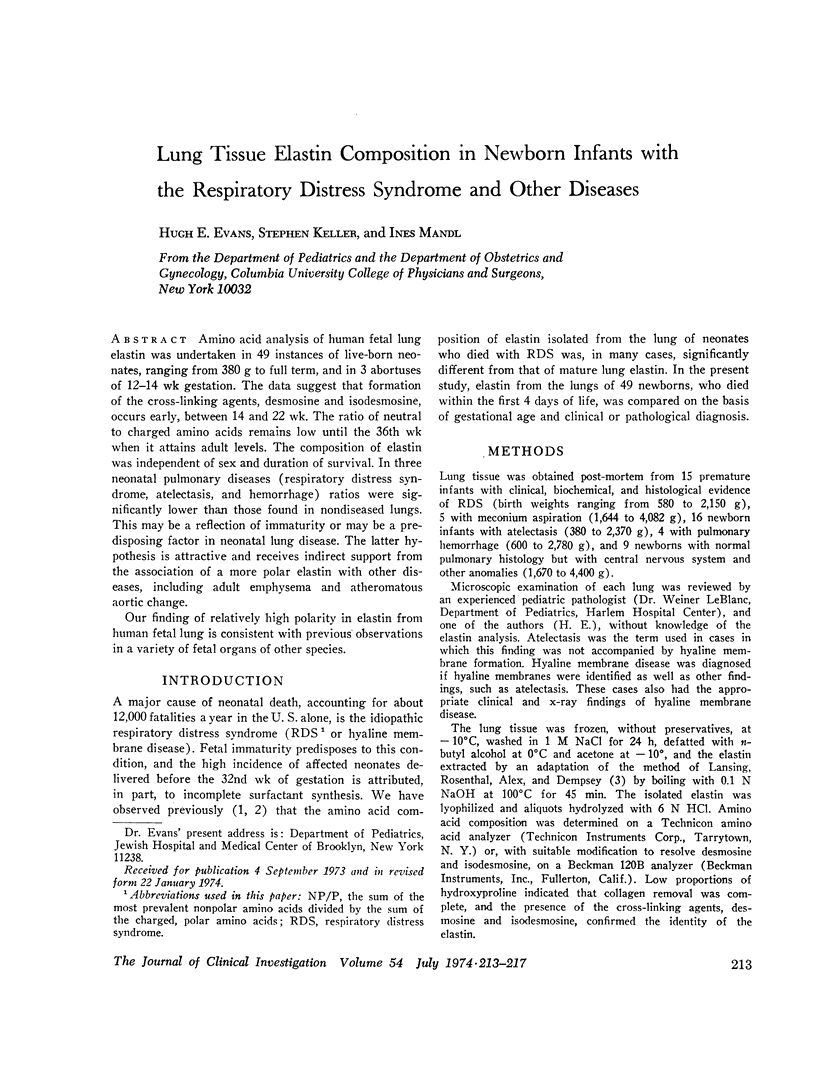
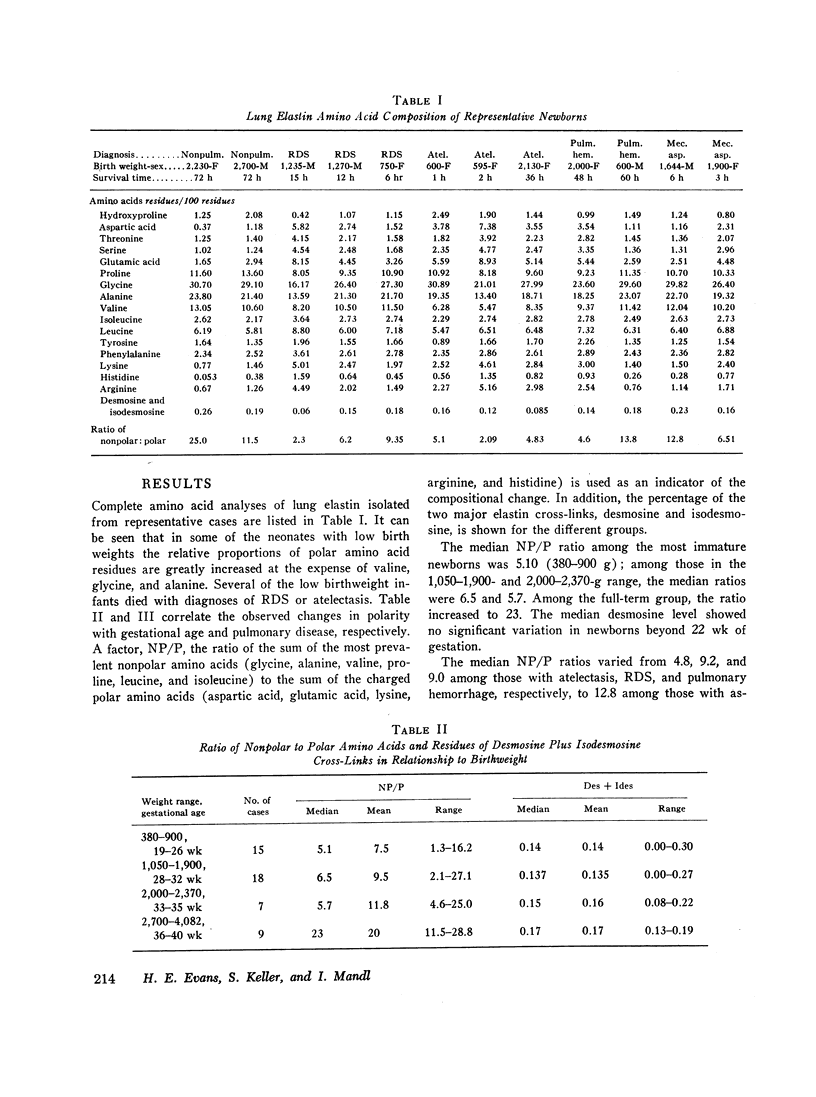
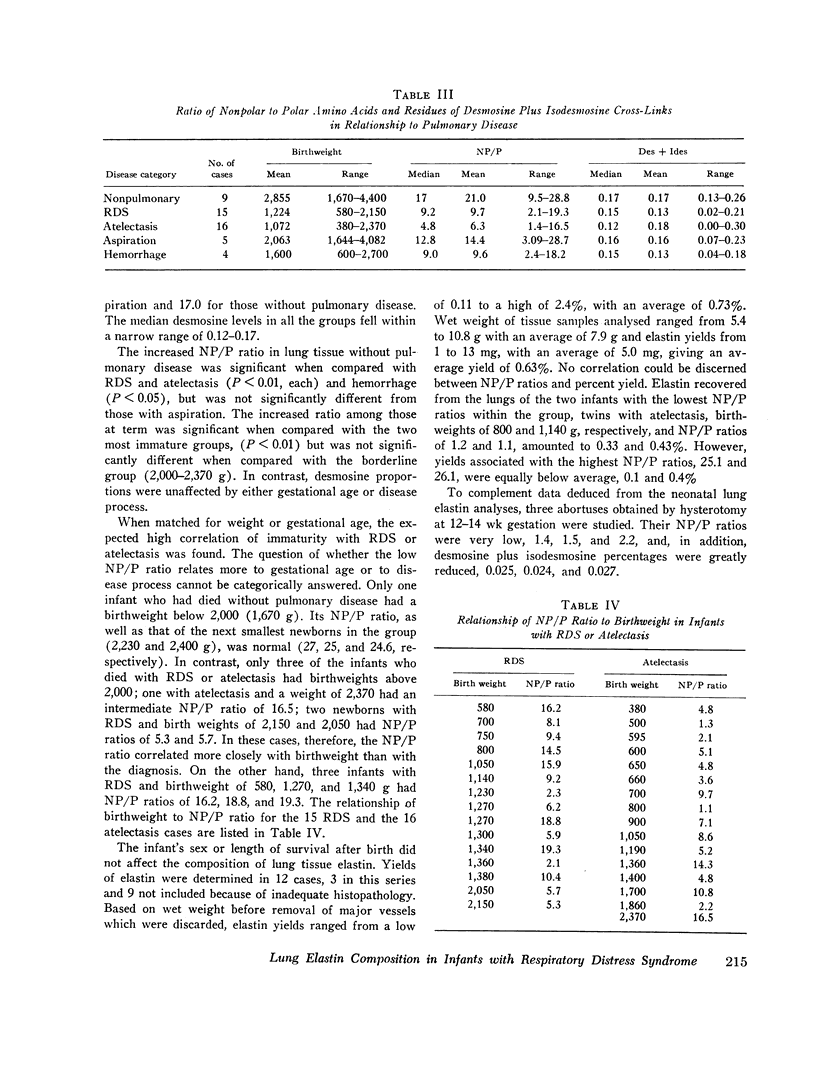
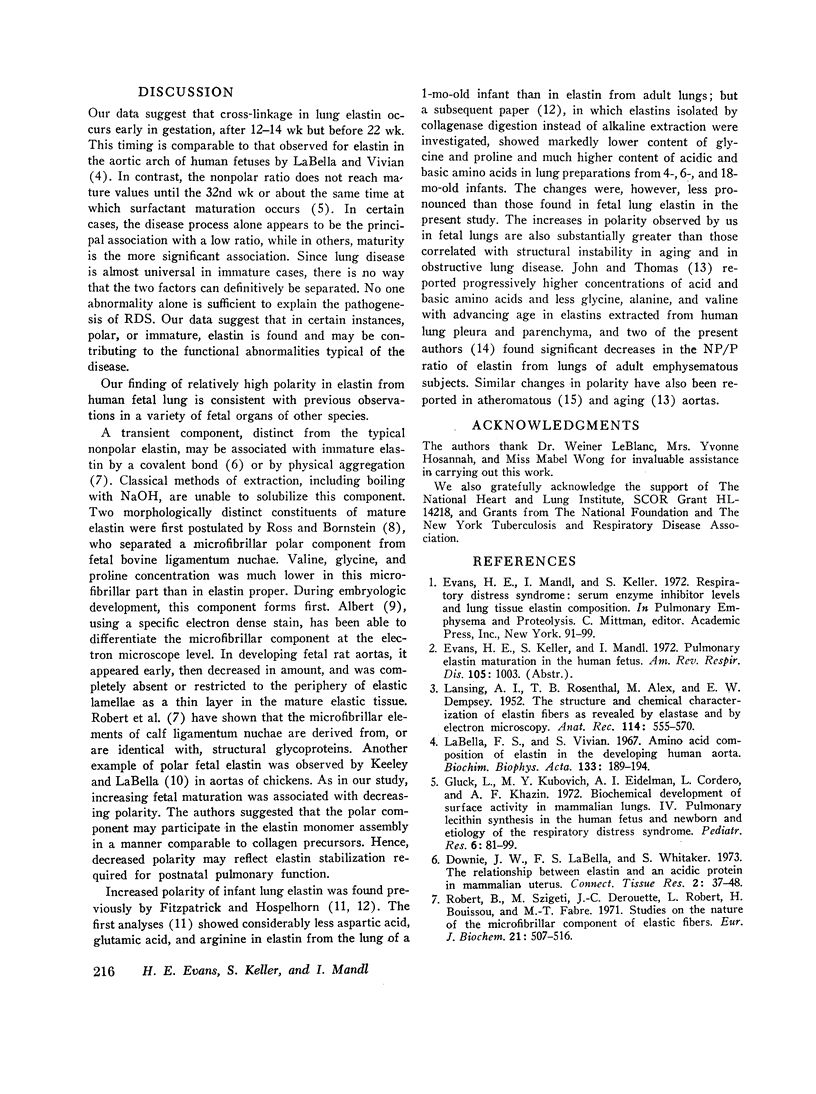
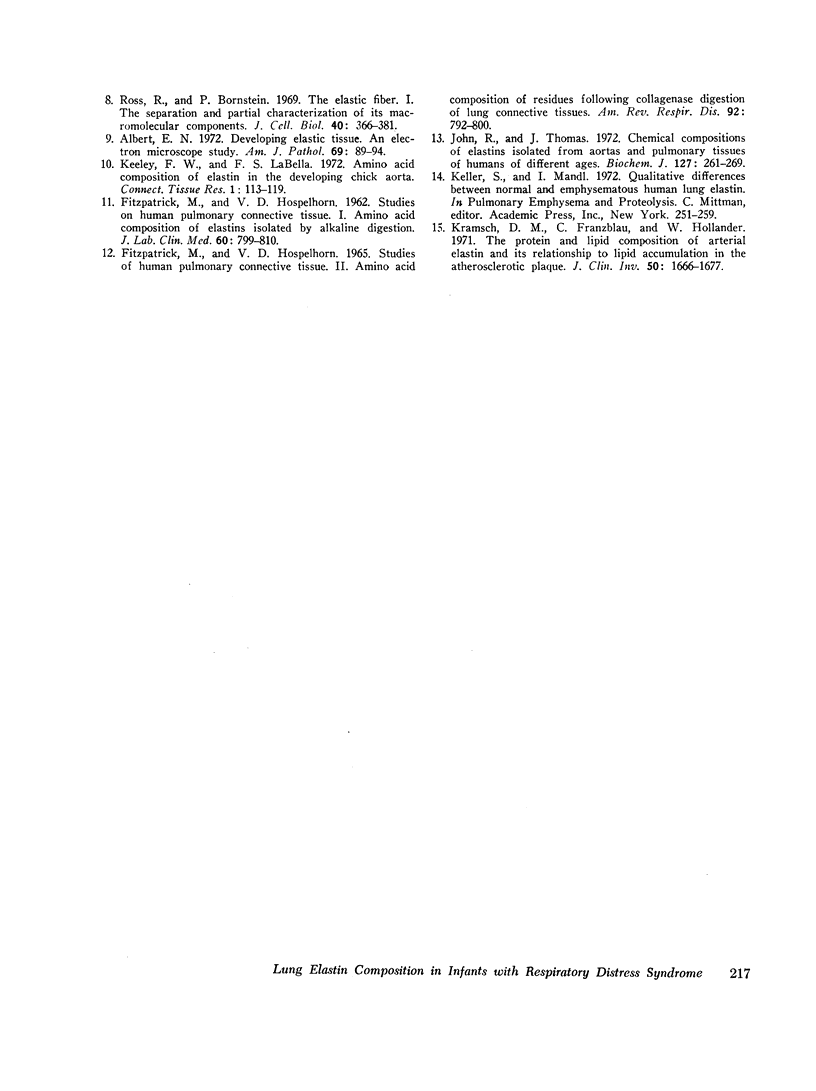
Selected References
These references are in PubMed. This may not be the complete list of references from this article.
- Albert E. N. Developing elastic tissue. An electron microscopic study. Am J Pathol. 1972 Oct;69(1):89–102. [PMC free article] [PubMed] [Google Scholar]
- Downie J. W., LaBella F. S., Whitaker S. The relationship between elastin and an acidic protein in mammalian uterus. Connect Tissue Res. 1973;2(1):37–48. doi: 10.3109/03008207309152598. [DOI] [PubMed] [Google Scholar]
- FITZPATRICK M., HOSPELHORN V. D. Studies on human pulmonary connective tissue. I. Amino acid composition of elastins isolated by alkaline digestion. J Lab Clin Med. 1962 Nov;60:799–810. [PubMed] [Google Scholar]
- Fitzpatrick M., Hospelhorn V. D. Studies of human pulmonary connective tissue. II. Amino acid composition of residues following collagenase digestion of lung connective tissues. Am Rev Respir Dis. 1965 Nov;92(5):792–800. doi: 10.1164/arrd.1965.92.5.792. [DOI] [PubMed] [Google Scholar]
- Gluck L., Kulovich M. V., Eidelman A. I., Cordero L., Khazin A. F. Biochemical development of surface activity in mammalian lung. IV. Pulmonary lecithin synthesis in the human fetus and newborn and etiology of the respiratory distress syndrome. Pediatr Res. 1972 Feb;6(2):81–99. doi: 10.1203/00006450-197202000-00002. [DOI] [PubMed] [Google Scholar]
- John R., Thomas J. Chemical compositions of elastins isolated from aortas and pulmonary tissues of humans of different ages. Biochem J. 1972 Mar;127(1):261–269. doi: 10.1042/bj1270261. [DOI] [PMC free article] [PubMed] [Google Scholar]
- Kramsch D. M., Franzblau C., Hollander W. The protein and lipid composition of arterial elastin and its relationship to lipid accumulation in the atherosclerotic plaque. J Clin Invest. 1971 Aug;50(8):1666–1677. doi: 10.1172/JCI106656. [DOI] [PMC free article] [PubMed] [Google Scholar]
- LANSING A. I., ROSENTHAL T. B., ALEX M., DEMPSEY E. W. The structure and chemical characterization of elastic fibers as revealed by elastase and by electron microscopy. Anat Rec. 1952 Dec;114(4):555–575. doi: 10.1002/ar.1091140404. [DOI] [PubMed] [Google Scholar]
- Labella F. S., Vivian S. Amino acid composition of elastin in the developing human aorta. Biochim Biophys Acta. 1967 Feb 21;133(2):189–194. doi: 10.1016/0005-2795(67)90058-x. [DOI] [PubMed] [Google Scholar]
- Robert B., Szigeti M., Derouette J. C., Robert L. Studies on the nature of the "microfibrillar" component of elastic fibers. Eur J Biochem. 1971 Aug 25;21(4):507–516. doi: 10.1111/j.1432-1033.1971.tb01496.x. [DOI] [PubMed] [Google Scholar]
- Ross R., Bornstein P. The elastic fiber. I. The separation and partial characterization of its macromolecular components. J Cell Biol. 1969 Feb;40(2):366–381. doi: 10.1083/jcb.40.2.366. [DOI] [PMC free article] [PubMed] [Google Scholar]


